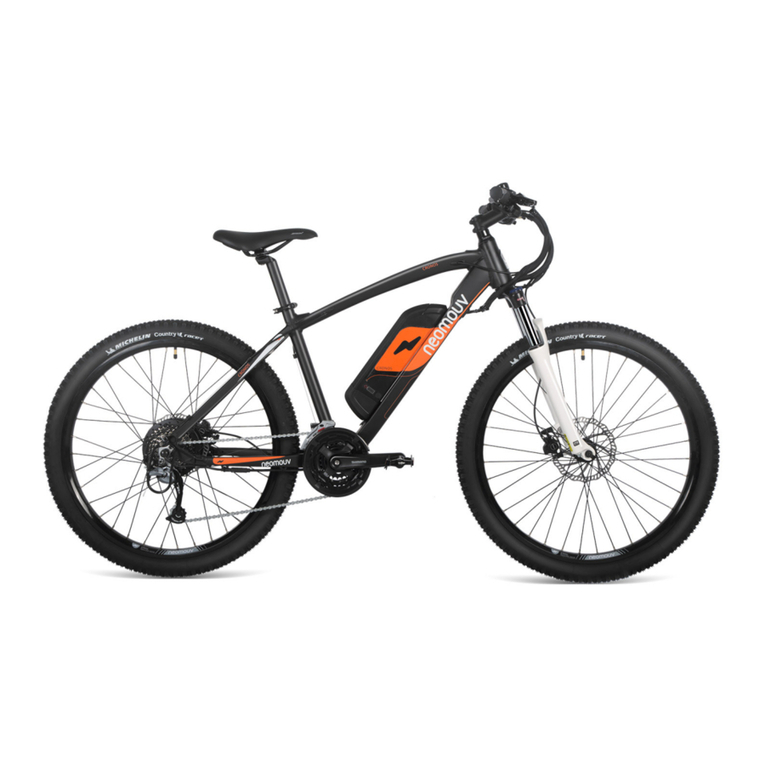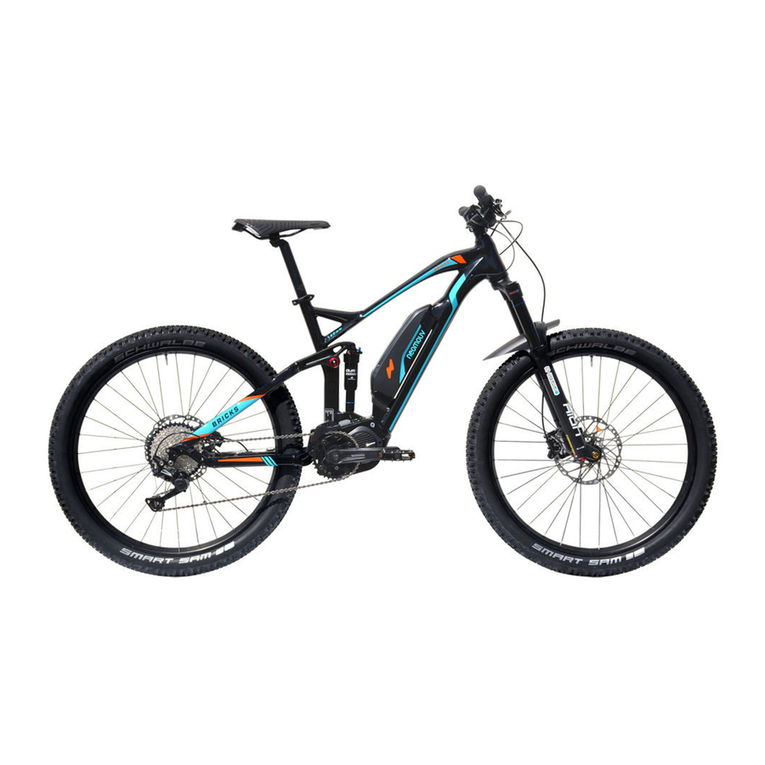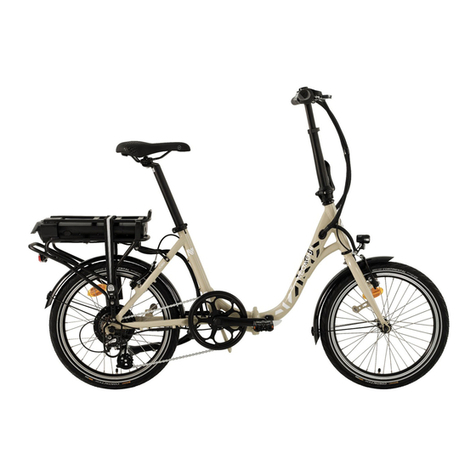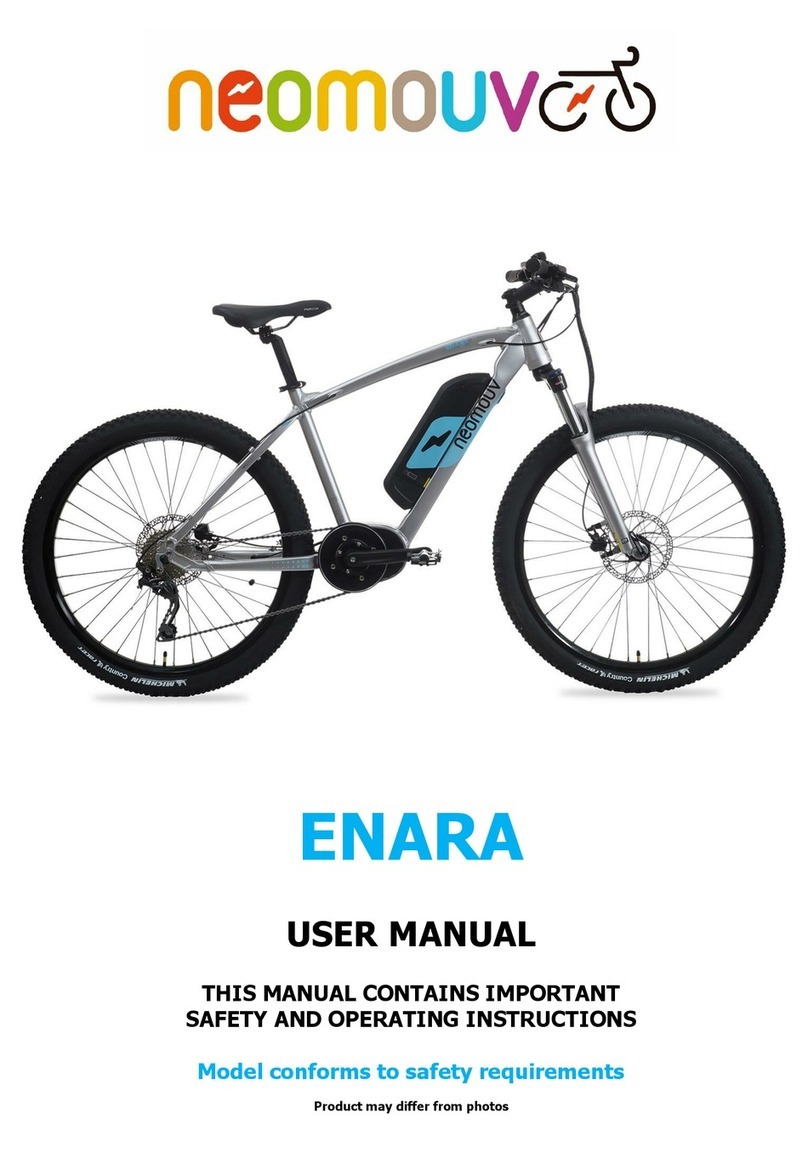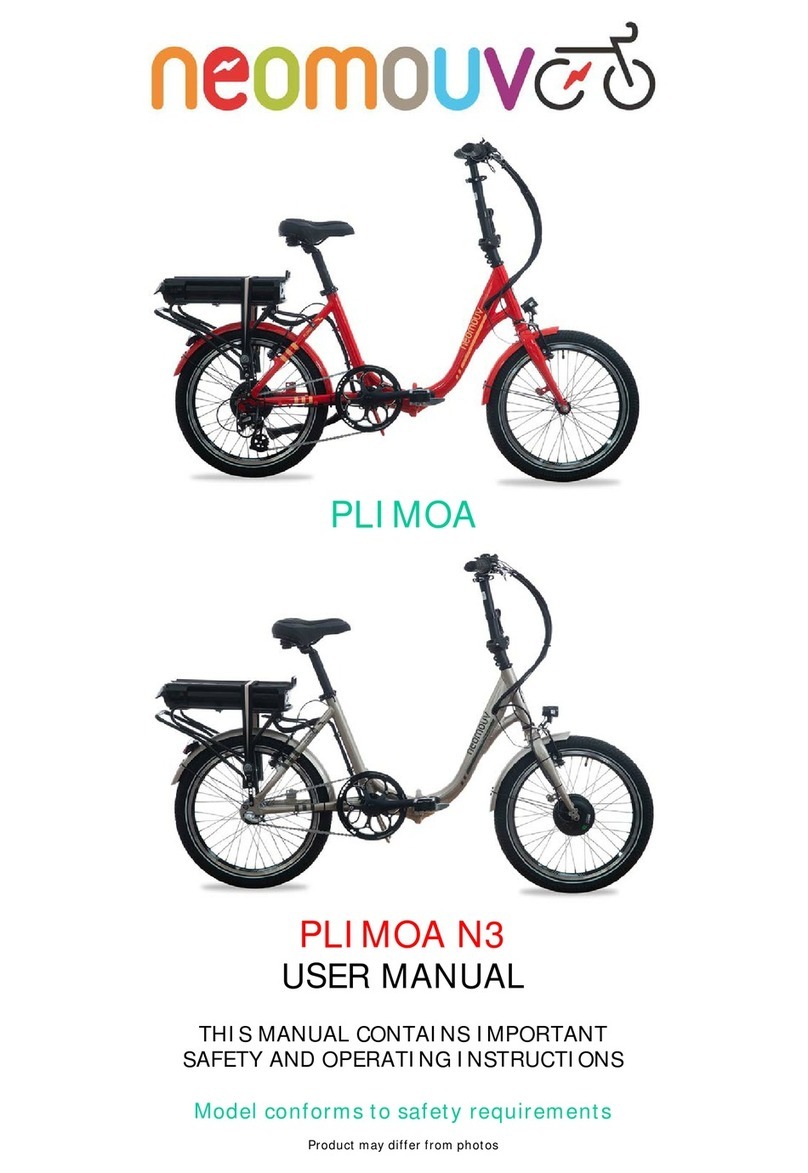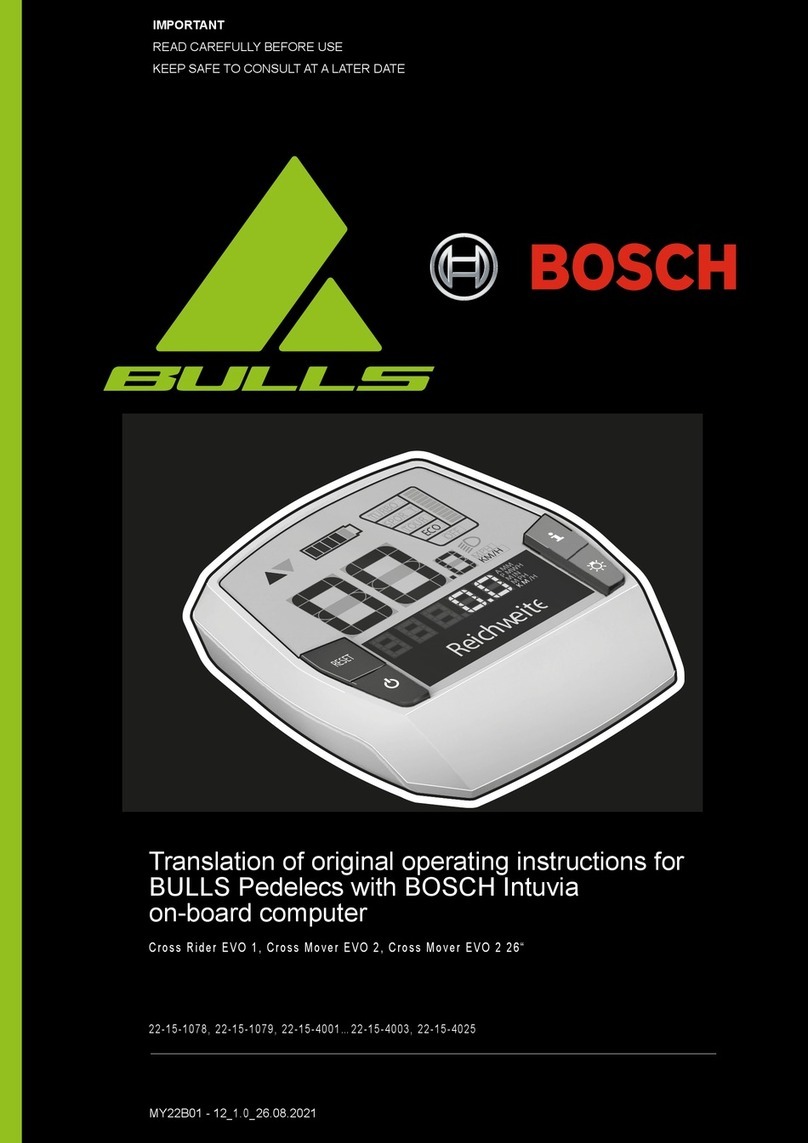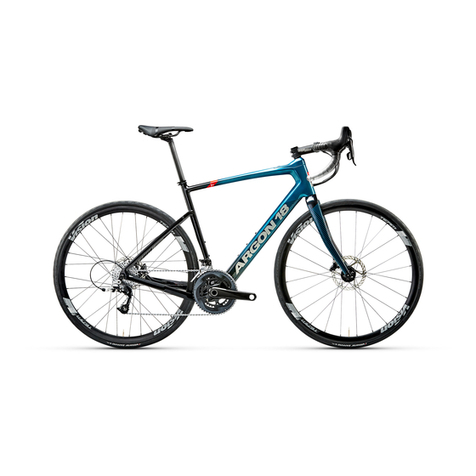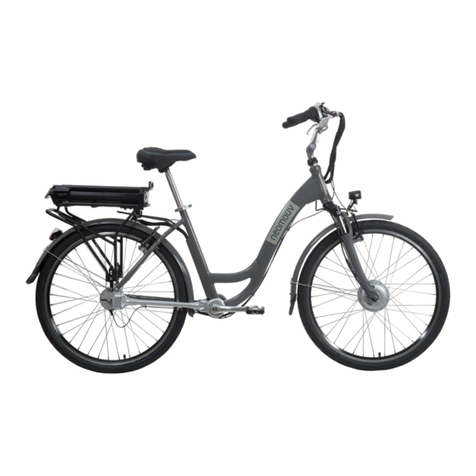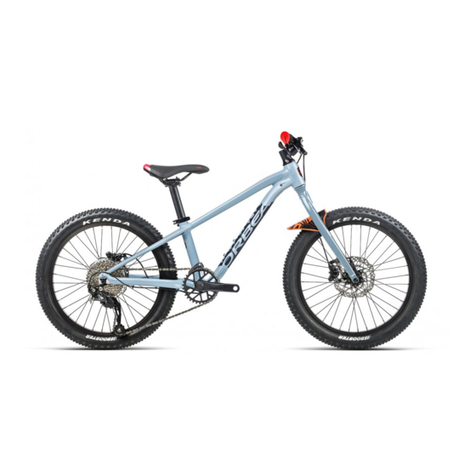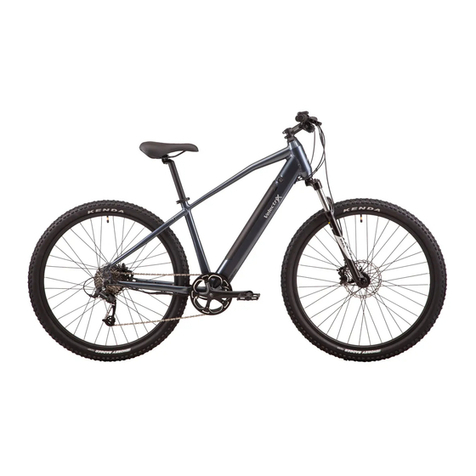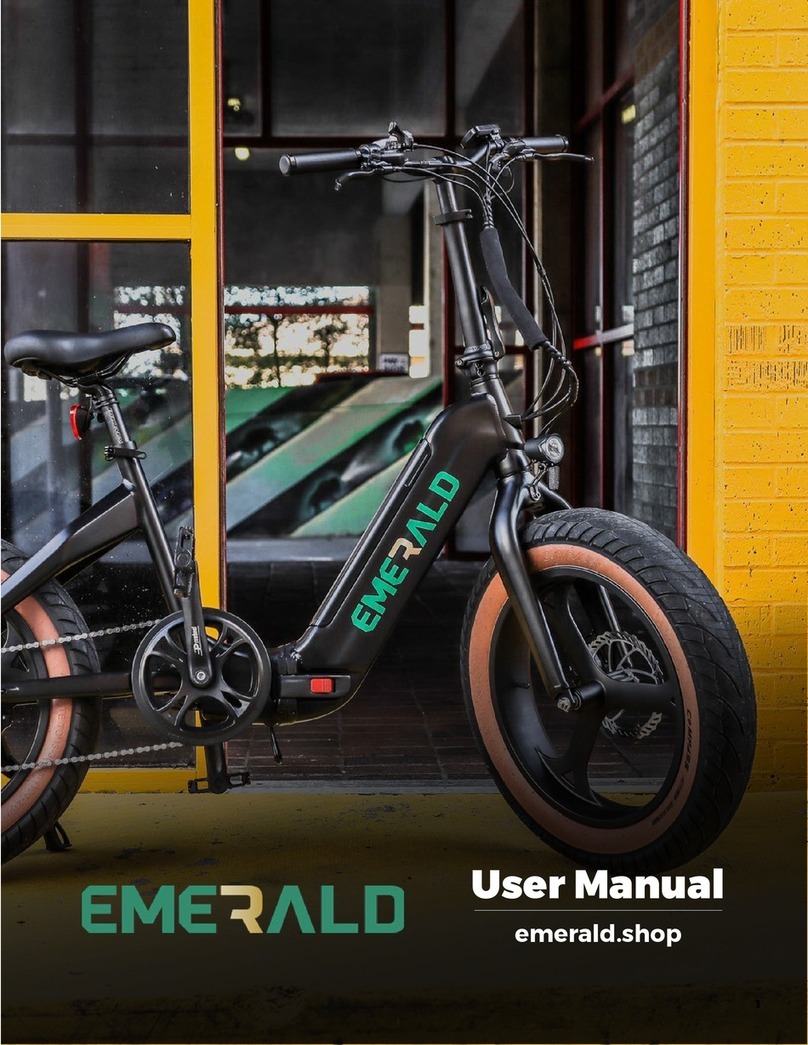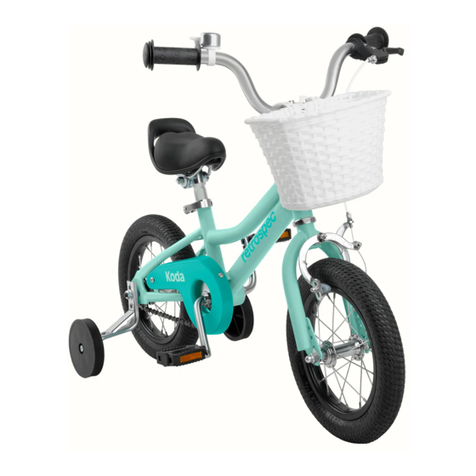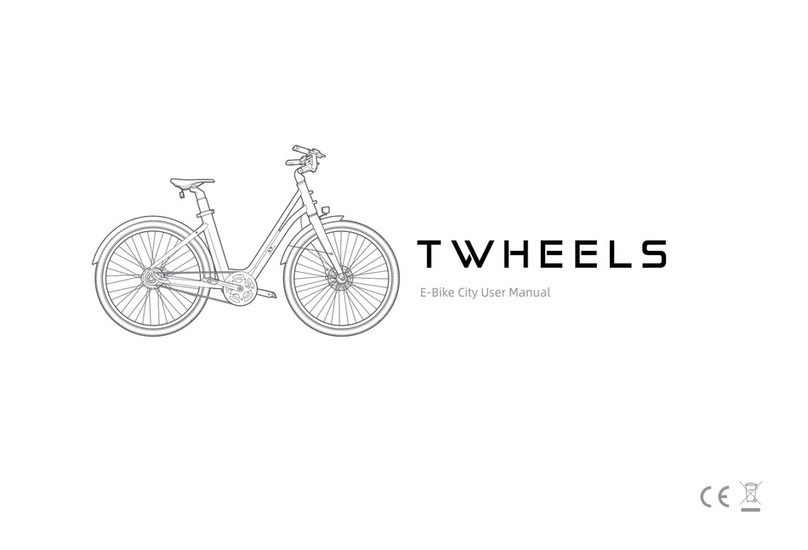SUMMARY
1- ADJUSTMENTS / ASSEMBLY .................................................................................................................... 5
1.1 Saddle settings........................................................................................................................................ 5
1.1.1 Adjusting the saddle....................................................................................................................... 5
1.1.2 Saddle height.................................................................................................................................. 5
1.2 Adjusting the handlebars........................................................................................................................ 6
1.3 Brake adjustment.................................................................................................................................... 7
1.3.1 Front brake Type V-Brake.............................................................................................................. 7
1.3.2 Rear Brake Type V-Brake.............................................................................................................. 8
1.4 Carrier..................................................................................................................................................... 9
1.5 Assembly and disassembly wheels (rear wheel by specialist) ............................................................ 10
1.5.1 Front wheel .................................................................................................................................. 10
1.5.2 Rear wheel ................................................................................................................................... 10
1.6 Lights.................................................................................................................................................... 12
1.7 Folding the e-bike ................................................................................................................................ 13
2 - USE OF AN EBICYCLE ............................................................................................................................. 15
2.1 Shifting gears........................................................................................................................................ 15
2.2 Change speeds electronic .................................................................................................................... 15
2.3 The display .......................................................................................................................................... 16
2.4 The electric assistance.......................................................................................................................... 17
2.4.1 Operation ..................................................................................................................................... 17
2.4.2 Performance values ..................................................................................................................... 17
2.4.3 Technical specifications of the assistance system ....................................................................... 18
2.4.4 Switching on the battery............................................................................................................... 18
2.4.5 The electric motor ........................................................................................................................ 18
3 - CHARGING THE BATTERY .................................................................................................................... 19
3.1 Charger................................................................................................................................................. 19
3.1.1 Precautions for use (safety instructions)........................................................................................... 20
3.1.2 Protecting the charger....................................................................................................................... 20
3.2 Battery .................................................................................................................................................. 21
3.3 Recommendations for your battery...................................................................................................... 22
Manual PLIMOA
2




















